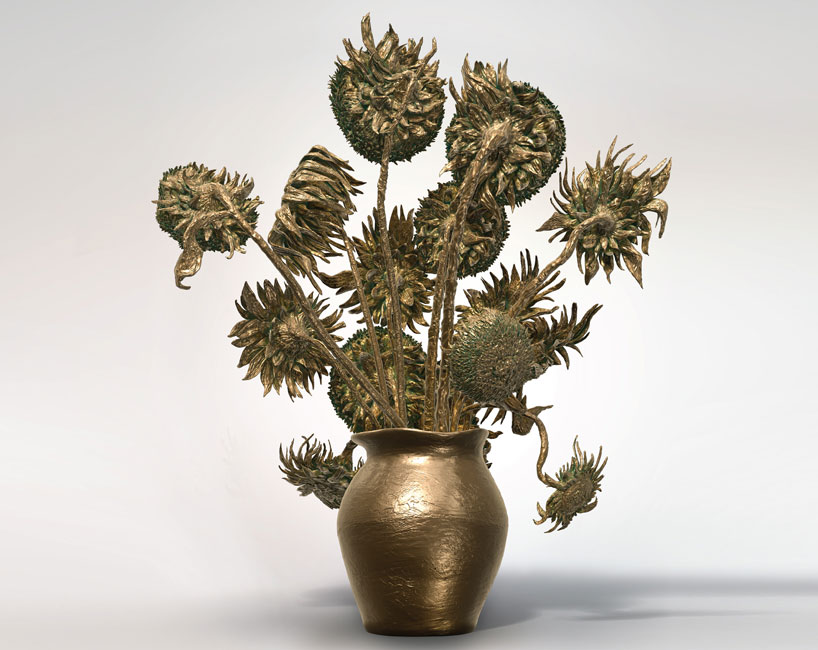Image acquired from: design-milk.com/3d-printed-version-of-joy-divisions-unknown-pleasures-cover/
This is a 3D print of Joy Division’s Unknown Pleasures album artwork, a particularly influential piece of graphic design by Peter Saville. The thing that I love about the 3D print is the way that the design feels quite abstract, as well as being based on something, that while measurable, is not something that we can actually visualise ourself, namely a pulsar signal. This is pretty stock standard 3D printing, but I like what the form represents. It represents a famous piece of history, it represents something powerfully creative and inspiring. This is what I want to create with my system, something that allows people to feel inspired and driven by what they are creating.
Image acquired from: design-milk.com/innovative-catenary-pottery-printer-gt2p/
Created by Chilean Studio gt2P, this "Catenary Pottery Printer" prints by allowing plaster to be poured onto fabric which is arranged in a particular way to allow the plastered fabric to retain particular forms. By allowing the water to seep through the fabric, the fabric ultimately retains the plaster and turns into a hard, waterproof form that is then cut out of the fabric piece.
Image acquired from: design-milk.com/innovative-catenary-pottery-printer-gt2p/
By doing this, it allows creation of parametric forms without the use of a computer, allowing for the creation of infinitely interesting items, as well as nigh unlimited numbers of different abstract forms. This "printer is fantastic, as rather than being some sort of computer controlled device, the output is so terribly human, so completely hand-designed, that that the computer element that could have been there to generate the parametric forms is completely lost amongst the design. And that's great.
Image acquired from: design-milk.com/floralia-eragatory/
The way that this vase was made is pretty complicated, and I won't get into it, but if you want to know more, you can check it out over at Design Milk. I'm a big fan of the form that this takes, as it is something that really represents an abstract, possibly useless take on an age-old classic. I think I want to create an interesting take on that same concept. Except, rather than re-shaping the form of a classic design, I want to re-shape the way a classic process takes place. Rather than doing the process through traditional means, what if the process was controlled by a user-input driven, very inorganic device, that however defiled the user's input, yet relished the semi- chaotic randomness that resulted from that destruction of normal process.
Image acquired from: designboom.com/art/3d-printed-sculptural-replica-of-vincent-van-goghs-sunflowers-10-11-2013/
As you can probably tell, I've got some ideas, they just haven't totally come to fruition yet, so I'm going to do some sketches and make them more clear, for both you, the readers, and more importantly, myself.






No comments:
Post a Comment